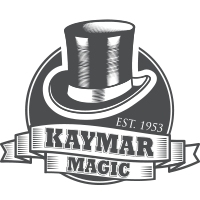One of the projects that I am the most proud of is the Essential Card Magic Toolbox. It collects together seven different projects, and used in the right order, it will basically teach ANYONE how to be a sleight of hand card magician. The danger with any kind of project of this magnitude is that it is easy to become completely overwhelmed with the information - so here is how to get the most out of the Toolbox.
1. Ultimate Self Working Card Tricks.
Start off with this disc. On it is 11 of the very best card tricks in the world, and you don't need to know a single move to do any of them. So making this your first port of call is important. In one evening, you can learn a trick (and ideally only one so you can practice it) and have something world class to show people literally right away. Spend a few nights learning a couple of the routines, and putting some presentation on them that suits you. You don't need to learn EVERYTHING - just a couple to get you started.
2. The False Shuffles and Cuts Project.
Move onto this project, as it's likely that a couple of the self working card tricks that you have looked at require a partial or full deck stack. These tricks are amazing, but if you can apparently shuffle and cut the pack before you even start, then the same tricks become total show-stoppers. Practice maybe the Charlier Shuffle, or some of the Optical Shuffles - these are easy and you can use them almost straight away. The other shuffles and cuts will take more work, but you can practice them in your spare time, and in the meantime rely on simpler techniques. Trick wise, check out Paul Curry's Think of A Card (literally a dream effect) and Weigh by Erdnase - both simple and very effective!
3. The Forces Project
Next up, being able to force a card is a natural progression. There's lots of tricks where just forcing a card is literally all the technique in it, and out of the 24 techniques taught on the DVD, choose a couple that take your fancy and nail them. Then try Par Optic Vision, and Decipher from the trick sections... again, both so simple, but couldn't be more effective.
4. The Controls Project.
Once you can force a card, being able to control it is an essential skill to have. Now that you have handled cards and learnt some new tricks, here is a good time to take stock. What sort of performer are you? Are you trying to look smooth, like a card shark? Or casual? Or particularly messy? Bear your approach in mind when you go through the Controls Project, and choose a couple of techniques that you like, AND that fit your handling style. For example, if you are trying to look smooth, The Swivel Cut Control or Duvivier Undercut Techniques will suit you. If you want to be more casual, learn the Flexible Switchout and the Overhand Shuffle Techniques. Try to get at least two controls nailed - one to the top, and one to the bottom. Anything else you can revisit as and when, but with those under your belt, that's the basics mastered. In the trick section, check out Psychic Pickpocket and Blind Lemon Aces.
5. The Double Lift Project
The Double Lift is one of the first sleights that people try to learn, but the truth is, it's a MUCH harder move than people think, and the upshot is that a lot of people do really terrible double lifts, and blinker themselves. The truth is - there's a LOT of awesome card magic that doesn't use it, and once you are used to handling cards a bit, then you will have the patience and critical eye to learn and master the technique. There's tons on the DVD, but long term, I strongly recommend learning the pinky count technique. You can use others while you are practicing, but make that your goal. There's a LOT of great tricks on this disc too... I'd be genuinely surprised if you didn't add Leapfrog to your set right away, and the Mona Lisa Card Trick has been an unsung hero in my set for ages.
6. The Elmsley Count Project
In my opinion, this move is harder to grasp than any of the others - although the actual technique is quite simple, there's a couple of things happening at once, and conceptually the move is tricky to understand (or more specifically, hard to understand how it could be massively useful) but once it's under your belt, a whole WORLD of card magic comes open, including packet tricks. Whispersition on the project is amazing (based on a Roy Walton routine) and the original Elmsley 4 Card Trick has been shamefully overlooked - it's a trick with just four cards, with many phases, a kicker finish, instant reset and ends clean.
7. Ultimate Impromptu Card Magic
Finally, with working techniques from all the projects, you are now fully armed to tackle this project, which will give you 14 KILLER tricks to choose from, all working with sleight of hand from a borrowed and shuffled pack. Being able to take any deck of cards, and immediately perform sleight of hand magic with it is what being a real magician is all about.
So there you go! I hope that gives you guys and girls a bit of a battle plan to tackle the Toolbox overall, and as long as you pace yourself and give yourself some time to practice, you'll find literally all the card magic techniques that you will ever need, and probably all the tricks as well (there's over 50!).
Hope that helps, and if you have any questions, contact me directly at liam@kaymarmagic.com

